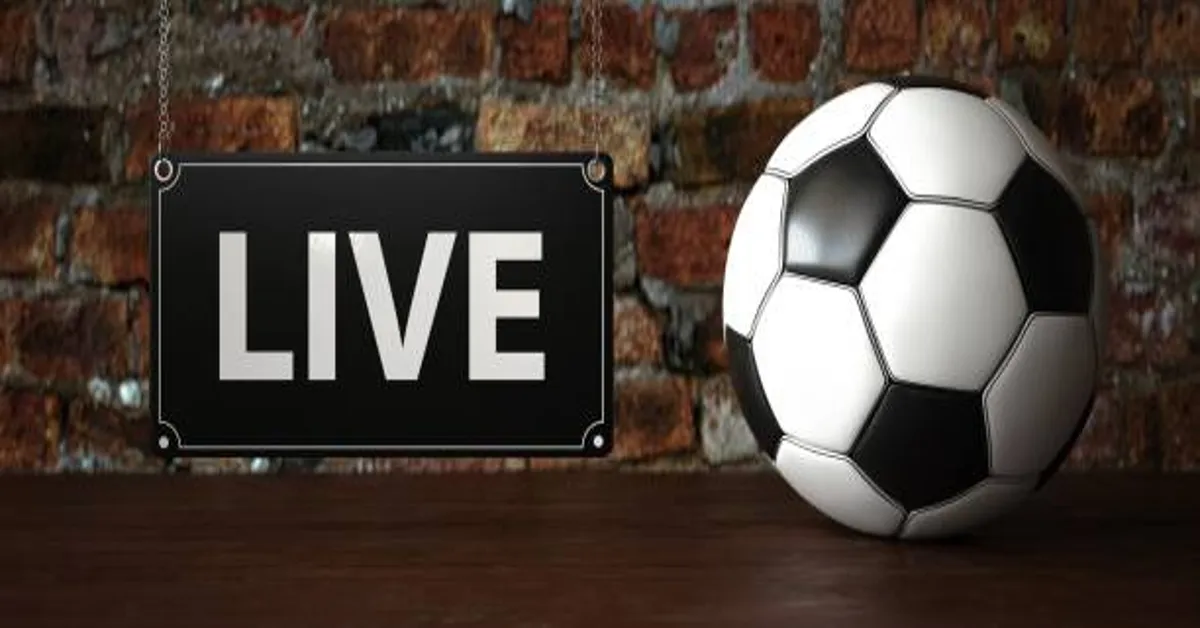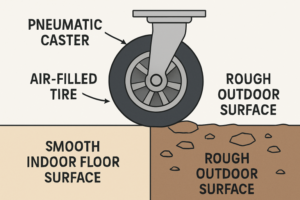Liveball is a dynamic and engaging sport that combines fast-paced physical activity, strategic thinking, and social interaction into a single experience. While not as universally known as tennis, basketball, or soccer, liveball has gained steady attention in gyms, fitness centers, and tennis clubs as both a training method and a recreational game. Its unique appeal lies in how it merges the principles of traditional ball games with an open-ended format that emphasizes movement, teamwork, and quick decision-making.
This article provides a comprehensive exploration of liveball. It will cover its origins, rules, styles of play, physical and mental benefits, training techniques, required equipment, comparisons with other sports, and strategies for success. In addition, it will highlight how liveball can be incorporated into fitness programs, competitive environments, and even casual social gatherings.
What is Liveball?
Liveball is a variation of traditional racquet sports or team ball games that prioritizes continuous play without frequent pauses. Unlike structured games with set scoring systems or rigid turn-taking, liveball emphasizes constant motion, rapid exchanges, and maintaining a “live” rally for as long as possible.
The central idea is simple: keep the ball in play. Whether played on a tennis court, gym floor, or adapted field, the aim is not just to score but to sustain energy, create challenging rallies, and develop athletic stamina. In many settings, liveball is used as a training tool for tennis players because it forces quick reflexes, improves footwork, and simulates real match intensity. In other contexts, it is structured more as a recreational group game where teamwork and communication are the focus.
Origins and Evolution of Liveball
The concept of liveball developed out of a need to create a hybrid between drill-based training and actual competition. Tennis professionals in the late 20th century started experimenting with formats that reduced downtime and maximized court engagement. Instead of players waiting for turns during practice drills, live ball ensured that multiple participants remained active simultaneously.
Over time, the format evolved beyond tennis. Fitness coaches adapted live ball principles to group workout sessions, emphasizing cardiovascular training through continuous motion. Recreational clubs began organizing live ball nights where players could enjoy both social interaction and competitive rallies without the rigidity of tournament rules.
Rules and Structure of Liveball
While liveball does not have one universal rulebook, several guiding principles remain consistent across variations:
- Continuous Play – The ball must remain in motion. Any unnecessary pauses or prolonged ball retrievals reduce the flow.
- Rotation of Players – In larger groups, participants rotate positions to ensure equal involvement.
- Scoring Flexibility – Points can be counted in traditional tennis-style formats, simplified rally points, or creative methods like “winner stays on.”
- Inclusive Levels – The rules are adaptable to beginners, intermediates, and advanced players, making the game accessible to diverse skill levels.
- Fast Pace – Serve speeds, rallies, and exchanges are intentionally quicker to build stamina and sharpen reflexes.
Example Table: Typical Live ball Format
| Feature | Description | Variation Options |
|---|---|---|
| Court Setup | Standard tennis court or gym space | Half-court, modified indoor setups |
| Teams | 2 vs 2 or 3 vs 3 | Singles, rotating pairs, large groups |
| Scoring | Points for winners or sustained rallies | Rally points, winner-stays, timed sets |
| Rotation | Players switch after every rally or point | Coach-directed, automatic, self-managed |
| Duration | 30–60 minutes per session | Extended for tournaments or workouts |
Physical Benefits of Liveball
Live ball provides a wide range of physical advantages, making it an excellent addition to training programs.
- Cardiovascular Fitness – The non-stop nature of live ball raises heart rates consistently, improving endurance and lung capacity.
- Agility and Reflexes – Quick exchanges and unpredictable rallies sharpen reaction times and footwork.
- Strength and Power – Swinging racquets or passing balls builds muscular power in the upper body, while explosive movements enhance leg strength.
- Coordination – Players learn to coordinate hand-eye movement in fast-paced situations.
- Calorie Burning – A one-hour live ball session can burn between 500–800 calories depending on intensity.
Mental and Social Benefits
Beyond physical conditioning, live ball contributes heavily to mental and emotional well-being.
- Decision-Making – Players must think strategically in real-time, enhancing cognitive processing speed.
- Stress Relief – The high-energy nature of the game serves as a mental release from daily stress.
- Team Bonding – When played in groups, live ball fosters communication, trust, and teamwork.
- Confidence Building – Successfully keeping rallies alive and scoring points provides a sense of accomplishment.
Training Techniques for Liveball
To maximize performance in live ball, players can adopt structured training strategies:
- Footwork Drills – Ladder exercises, side shuffles, and cone drills to enhance agility.
- Reaction Training – Using reaction balls or partner tosses to simulate unpredictable bounces.
- Endurance Workouts – Interval sprints, jump rope routines, and shuttle runs to improve stamina.
- Skill Refinement – Practicing volleys, smashes, and groundstrokes in high repetition to prepare for live rallies.
- Mental Conditioning – Visualization techniques and mindfulness exercises to maintain focus under pressure.
Equipment Needed
While live ball can be played with minimal equipment, certain items enhance the experience:
- Racquets or Balls – Depending on whether the format is racquet-based or hand-passed.
- Court or Open Space – A tennis court, gymnasium, or modified indoor space works well.
- Markers or Cones – For setting boundaries and rotational zones.
- Appropriate Footwear – Court shoes or trainers to ensure grip and safety.
- Timer/Scoreboard – Useful for structured formats.
Liveball vs. Traditional Tennis
| Aspect | Liveball | Traditional Tennis |
|---|---|---|
| Game Flow | Continuous, fast-paced, fewer breaks | Structured with frequent pauses |
| Scoring | Flexible, creative, rally-based | Standard point system (15, 30, 40, game) |
| Player Involvement | High – multiple players active simultaneously | Moderate – limited to two or four players |
| Focus | Endurance, reflexes, and energy | Strategy, technical precision, competition |
| Accessibility | Easier for beginners to engage in quickly | Requires learning complex scoring rules |
Strategies for Success in Liveball
- Positioning – Staying in a ready stance near the center ensures coverage of both sides.
- Communication – Especially in doubles or team formats, constant verbal cues prevent confusion.
- Shot Selection – Mixing powerful smashes with controlled placements keeps opponents off balance.
- Energy Management – Pacing oneself ensures stamina throughout long rallies.
- Anticipation – Reading body language and ball trajectory helps predict shots effectively.
Liveball in Fitness Programs
Many fitness trainers now incorporate live ball into group exercise classes. Its advantages in calorie burning, group bonding, and cardiovascular improvement make it a natural fit. Live ball sessions can be adapted into high-intensity interval training (HIIT) formats, where players alternate between intense rallies and short recovery breaks.
Some clubs even design live ball-specific leagues, where players meet weekly for social competition. This approach blends fitness, recreation, and community building into one package.
Safety Considerations
Though fun and beneficial, live ball comes with physical demands. Safety measures include:
- Warming up and stretching before sessions.
- Staying hydrated to prevent cramps.
- Wearing proper footwear to avoid slips.
- Ensuring the playing area is free of obstacles.
- Adjusting pace and intensity for beginners.
Future of Liveball
As health-conscious lifestyles and social sports gain popularity, liveball is poised for greater recognition. Its adaptability means it can thrive in schools, community centers, gyms, and professional training academies alike. Potential future developments include standardized rulebooks, organized tournaments, and digital tracking apps to measure live ball performance metrics.
ALSO READ: Kora Online: The Ultimate Guide to Gameplay, History, and Strategies
Frequently Asked Questions (FAQs)
1. Is liveball suitable for beginners?
Yes. Liveball is adaptable for all skill levels. Beginners can play simplified versions, while advanced athletes can push intensity for training.
2. How long does a typical liveball session last?
Most sessions last 30–60 minutes, though tournament formats may extend longer depending on the number of players and scoring systems.
3. Do I need professional equipment to play liveball?
Not necessarily. While racquets and standard courts are useful, liveball can be modified with basic balls, cones, and open spaces.
4. Is liveball only for tennis players?
No. Although popular in tennis communities, liveball is also used in general fitness programs, group workouts, and recreational gatherings.
5. Can liveball help improve fitness levels?
Absolutely. Liveball improves cardiovascular health, burns calories, builds muscle, and enhances coordination, making it excellent for overall fitness.









